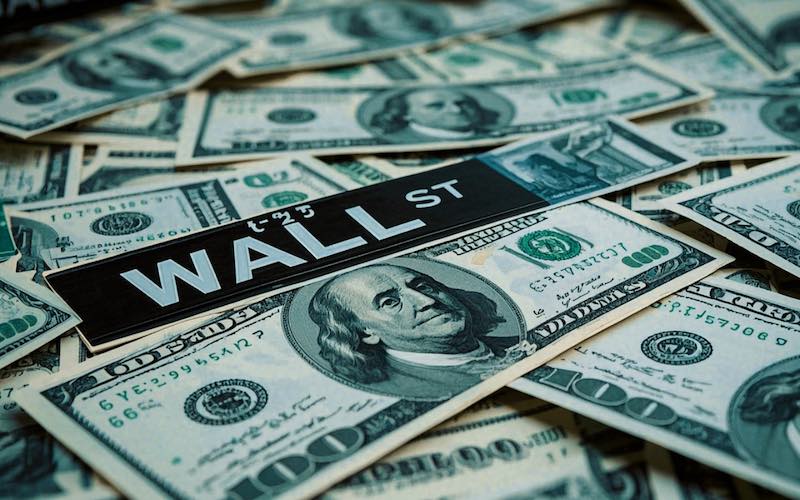The Swiss franc becomes the dark horse of the foreign exchange market in the first half of 2025. Does the central bank dare to loosen its monetary policy again?
2025-07-04 18:49:02

Safe-haven demand remains unabated, Swiss franc continues to rise
The appreciation of the Swiss franc was initially due to the rise in global risk aversion, especially the global trade uncertainty brought about by the Trump administration's resumption of tariff policies, and the geopolitical risks caused by the intensified conflict between Israel and Iran. As a typical safe-haven asset, the Swiss franc has once again been sought after by funds.
Even after the United States reached a preliminary trade agreement with some of its allies and tensions in the Middle East showed signs of easing, the strength of the Swiss franc has not reversed. Analysts believe that the euro/Swiss franc exchange rate has remained in a range of 0.9305 to 0.9425 since April 22, especially as it continues to strengthen against the US dollar, showing its stable and strong appreciation momentum.
Inflation is under control and policy space remains
Although the Swiss National Bank (SNB) has lowered its policy interest rate to 0 in the first half of this year and pushed inflation back into the positive range, the annual CPI rate in June remained at an extremely low level of 0.1%. This provides the market with the possibility of continuing to bet that the SNB will cut interest rates by another 25 basis points in September. Once this happens, Switzerland will once again enter the era of negative interest rates, the first time since June 2022.
However, considering that the Swiss economy has shown signs of recovery in the first quarter of 2025 and the SNB's inflation target range is 0% to 2%, analysts believe that there is no urgency for a significant easing in the short term. The market is more concerned about whether the SNB will intervene in the foreign exchange market again to maintain economic and price stability if the Swiss franc continues to be strong.
The willingness to intervene is low and policy tools are limited
According to published data, the SNB's net foreign exchange purchases in the first quarter of 2025 were only 49 million Swiss francs, which is consistent with the small-scale operations in previous quarters. This moderate attitude is closely related to the SNB's historical experience of turning to a "strong Swiss franc" strategy in recent years.
Looking back at the period from 2022 to 2023, the SNB bought a large amount of Swiss francs to suppress imported inflation. In the longer period before that, its strategy tended to suppress the Swiss franc exchange rate to promote inflation. Analysts pointed out that the SNB has always had strategic flexibility and the scale and direction of intervention can be quickly adjusted as needed.
Another obstacle to policy intervention is international politics. Although Swiss Finance Minister Keller-Sutter said that the United States has confirmed that Switzerland has not manipulated the exchange rate, the market still has concerns about the potential labeling risk. However, analysts believe that this statement provides a policy buffer for the SNB to re-enter the foreign exchange market when necessary.
IMF warnings and potential external shocks
The International Monetary Fund (IMF) recently issued a warning to SNB President Schlegel, reminding him to use policy tools with caution in the context of a highly inflated balance sheet. In particular, under the judgment that deflationary pressure may only be a temporary phenomenon, rash interest rate cuts or asset expansion may bring side effects.
The inflation structure is also worth paying attention to. The rise in Switzerland's CPI in June was mainly driven by holiday consumption-related items, such as tourism and accommodation, while energy items such as gasoline and air transportation remained weak. This short-term inflation structure indicates that if the Swiss franc continues to appreciate, the risk of deflation is still not far away.
In addition, the United States plans to impose a 31% tariff on some imported goods on July 9, which, if finally realized, will have a serious impact on Swiss exports. Analysts predict that if the failure of negotiations leads to a significant increase in tariffs, the SNB may have to take more radical easing measures in advance to hedge against external pressure.
Technical signals: Does the Swiss franc still have room to rise?
From the technical chart, EUR/CHF has been in a range since April 22, but the overall trend is still downward. Analysts believe that if it falls below the key support level of 0.9305, it may further fall to 0.9215 or even refresh the low of 0.9204 in November 2024.
Analysts believe that the upper resistance is concentrated around 0.9425. If it breaks through effectively, it may test 0.9490 and the high of 0.9630 on April 2. The current price range is near the historical low, and any changes in risk appetite and policy expectations may become a catalyst for triggering a breakthrough in the exchange rate.
Is the appreciation of the Swiss franc a trend or the end?
It is still unclear whether the Swiss franc will continue to maintain its strength. Analysts believe that if the global turmoil continues and the demand for safe assets remains, the Swiss franc may still have room to rise. However, if global inflation picks up, the economy gradually stabilizes, or Swiss exports suffer setbacks, the current appreciation momentum may also be reversed.
Analysts pointed out that the coming months will be a key window for judging whether the Swiss franc has entered a reversal period, especially the implementation of tariff policies, the SNB monetary policy statement and further performance of Swiss macroeconomic data, which will directly affect market expectations and capital flows.
- Risk Warning and Disclaimer
- The market involves risk, and trading may not be suitable for all investors. This article is for reference only and does not constitute personal investment advice, nor does it take into account certain users’ specific investment objectives, financial situation, or other needs. Any investment decisions made based on this information are at your own risk.










